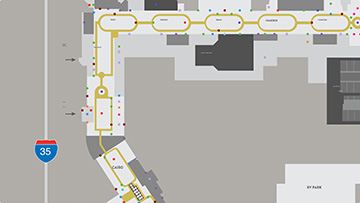Blackjack is one of the most popular casino games in the world, known for its blend of strategy and chance. A key part of mastering blackjack is understanding when and how to split. Splitting can be a game-changer in blackjack, offering opportunities to double your winnings or avoid costly mistakes. In this article, we’ll walk through everything you need to know about the rules of splitting in blackjack – when to do it, and when it’s best to avoid it.
What Does Split Mean in Blackjack
What does it mean to split in blackjack? If you’re dealt two cards of the same number, like two 8s or two 6s, you can choose to split them. This means you’ll turn them into two separate hands instead of one. After splitting, you’ll place an equal bet on the second hand, so now you have two bets.
You’ll play one hand first, asking the dealer for a card (called a “hit”) until you’re satisfied or go over 21. Then, you’ll move on to the second hand and do the same. If you go over 21, you lose that hand.
With a pair of aces, splitting works a bit differently. You only get one card for each ace, and you can’t hit again. If you get a 10, you have 21, but it’s paid out at 1:1, not the usual 3:2.
Blackjack Splitting Rules
In blackjack, splitting rules allow you to divide two cards of the same value into separate hands. Here are the key rules for splitting:
- Same Value Cards: You can only split if you have two cards of the same value, like two 7s or two Kings.
- Extra Bet: When you split, you must place a second bet equal to your original one, since you’re now playing two hands.
- Playing Each Hand: You play the hands one at a time. After splitting, you can ask the dealer for more cards (a “hit”) until you’re happy with your hand or you go over 21.
- Splitting Aces: If you split aces, you only get one additional card for each ace, and you can’t hit again. If you get a 10 after splitting aces, it counts as 21, but you’ll only get paid 1:1, not the usual 3:2.
- Re-splitting: Some casinos allow you to split again if you get another pair, but the rules can vary, so it’s always good to check before playing.
When to Split in Blackjack
In blackjack, knowing when to split your cards can help improve your chances of winning. Here are some common times when it’s a good idea to split:
- Always Split Aces and 8s: Splitting aces gives you a chance to build two strong hands, and splitting 8s helps you avoid a weak total of 16.
- Split 2s, 3s and 7s When Dealer Shows 2–7: These splits work well when the dealer has a weak upcard, giving you a chance to win both hands.
- Split 6s When Dealer Shows 2–6: If the dealer has a low card, splitting 6s can help you avoid playing a weak hand like 12.
- Split 9s When Dealer Shows 2–6 or 8–9: Splitting 9s in these cases increases your chances of getting a winning hand, but keep them together if the dealer has a 7, 10 or ace.
When Not to Split in Blackjack
Knowing when not to split in blackjack is just as important as knowing when to split. Here are the key situations when you should not split in blackjack:
- Never Split 10s or Face Cards: A total of 20 is a strong hand, and splitting it would reduce your chances of winning. Keep them together.
- Never Split 5s: A pair of 5s totals 10, which is perfect for doubling down. Splitting them could leave you with two weaker hands.
- Don’t Split 4s Unless Dealer Shows 5 or 6: A pair of 4s totals 8, which is a solid starting hand to hit or double down on. Splitting could weaken your position unless the dealer has a weak card.
- Avoid Splitting Low Pairs Against Strong Dealer Cards: For pairs like 2s, 3s or 6s, don’t split if the dealer is showing a high card (7 or higher). It’s usually better to play a single hand in those cases.
Blackjack Split Chart
| Your Cards | Dealer’s Upcard | Action |
|---|---|---|
| Aces (A, A) | Any | Always Split |
| 8s (8, 8) | Any | Always Split |
| 10s (10, 10 or Face Cards) | Any | Never Split |
| 9s (9, 9) | 2–6, 8, 9 | Split |
| 7, 10, Ace | Don’t Split | |
| 7s (7, 7) | 2–7 | Split |
| 8–Ace | Don’t Split | |
| 6s (6, 6) | 2–6 | Split |
| 7–Ace | Don’t Split | |
| 5s (5, 5) | Any | Never Split (Double Down if possible) |
| 4s (4, 4) | 5–6 | Split |
| 2–4, 7–Ace | Don’t Split | |
| 3s (3, 3) | 2–7 | Split |
| 8–Ace | Don’t Split | |
| 2s (2, 2) | 2–7 | Split |
| 8–Ace | Don’t Split |
Benefits of Splitting in Blackjack
Splitting in blackjack offers several key benefits that can help improve your odds of winning:
- Turn a Weak Hand into Two Strong Hands: Splitting pairs like 8s or Aces allows you to avoid playing a poor hand and gives you the chance to build two stronger ones.
- Double Your Chances of Winning: When you split, you’re essentially playing two hands instead of one, which means you have two chances to win against the dealer.
- Reduce Your Risk: By splitting pairs like 8s, you can avoid being stuck with a weak hand like 16, which often leads to losing. Splitting helps you make the most of your cards.
- Maximize Your Wins with Aces: Splitting Aces is a common strategy because you can build two hands starting from a strong position. Drawing a 10 or face card after splitting gives you a powerful hand of 21.
- Capitalize on Dealer’s Weak Hands: When the dealer shows a low card (like 2–6), splitting allows you to take advantage of their vulnerability and potentially win both hands.
Try Splitting at Blackjack Tables in WinStar Casino
Splitting in blackjack is a smart strategy that can significantly improve your odds when used correctly. By splitting, you can turn potentially weak hands into winning opportunities and maximize your chances of beating the dealer.
Understanding when and why to split is key. Whether you’re avoiding risky totals like a pair of 8s or taking advantage of the dealer’s low cards, splitting gives you more control over how the game plays out.
If you’re ready to put these strategies into action and take your blackjack skills to the next level, explore blackjack at WinStar and bring your splitting skills to our tables!






















